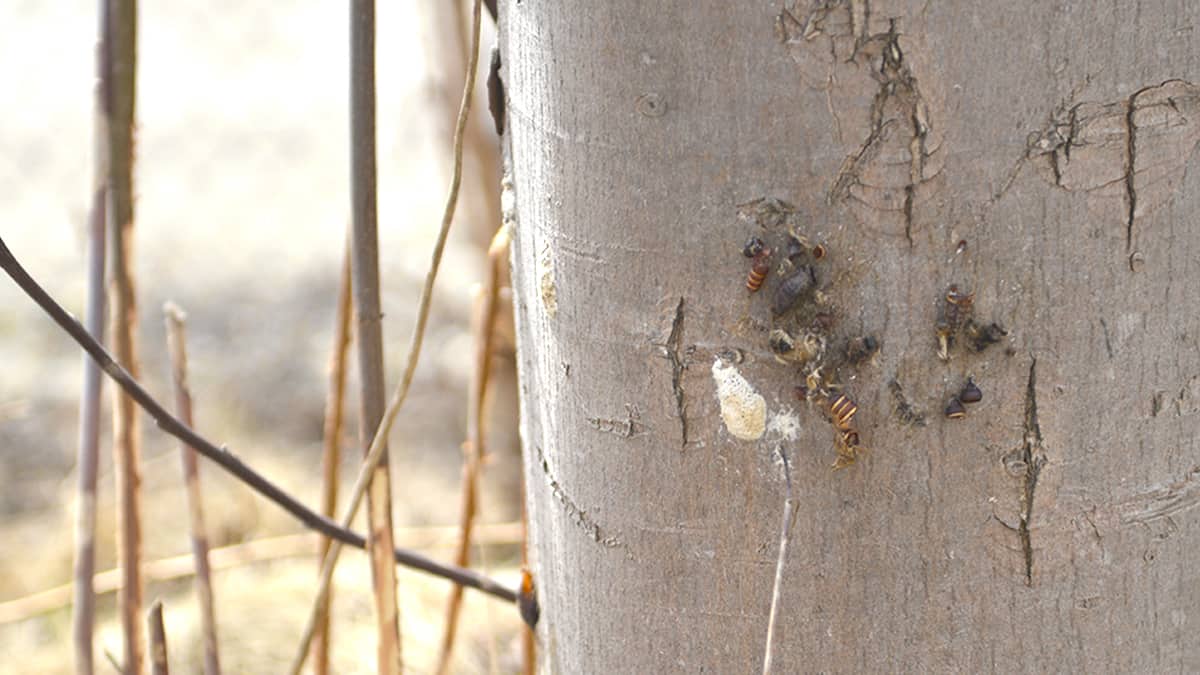No stranger to gypsy moth infestations, Waterloo Region saw a fairly major invasion last summer. This one is shaping up to be much the same.
“I’m not sure if it’s going to be sort of more widespread, or if we’ll sort of be in the same areas more or less as last year. They depend on wind to sort of blow them around a little bit, so, if we don’t get a lot of windy weather it may sort of remain in the same areas as they were last year,” said Albert Hovingh, an environmental and stewardship planner with the Region of Waterloo
The moths are a threat to trees in the region. In small numbers most years, the damage can be contained, but larger infestations put more trees at risk.
It’s in their caterpillar stage that the insects do damage. Gypsy moth caterpillars defoliate host trees, often killing them. A single gypsy moth in its larvae form will eat an average of one square metre of leaves and in large numbers can be particularly destructive to a tree which needs the leaves to survive. As leaves help create food for a tree by turning light into food via photosynthesis, a reduction in coverage can result in a loss of food production. The moths tend to feed on leafy trees, usually choosing oak, birch and aspen in northern regions, while focusing on sugar maple, beech, eastern white pine and blue spruce in southern parts of the province.
“They eat the young leaves. Most trees can actually re-grow leaves, but what it means is that the trees have to expend extra energy to grow a new set of leaves. If they get this a couple of years in a row, they really start to deplete their sugar reserves, and that puts stress on the tree so that they can become susceptible to diseases or if you have a drought year that it’s just hard for the trees to produce carbohydrates,” said Hovingh.
Homeowners who identify gypsy moths on trees can take steps to eradicate them at this point by adding a burlap strip around the infected area of the tree and then drowning the critters in soapy water. For larger plots of land, spraying with BTK – Bacillus thuringiensis kurstaki – is the preventive measure that is commonly used. The Grand River Conservation Authority, for instance, is using on two of its properties, Pinehurst Lake and Brant conservation areas, where higher levels of gypsy moths have been reported.
Unlike areas such as Oakville and Burlington, Waterloo Region and its municipalities do not spray to protect their own assets, with Hovingh suggesting the decision not to spray stems from the rare severity of infestations.
The townships usually see more activity from gypsy moths than their urban neighbours within the region, perhaps due to the high number of sugar-maple woodlots.
“The townships have generally been affected more. There are property owners out in the townships, like a lot of the maple syrup producers, they’ve actually gotten together and they are going to have their woodlot sprayed. They’re doing that together, just like we would spray any other crops,” he said.
“They’re trying to protect their trees because they’re relying on maple syrup. That being said, there’s also been some maple syrup producers who did not tap their trees this year. Again, just trying to protect the sugar reserves and the trees, they figure is they if they don’t tap the trees, that will just sort of be less stress on the trees, and that will hopefully help the trees recover.”










